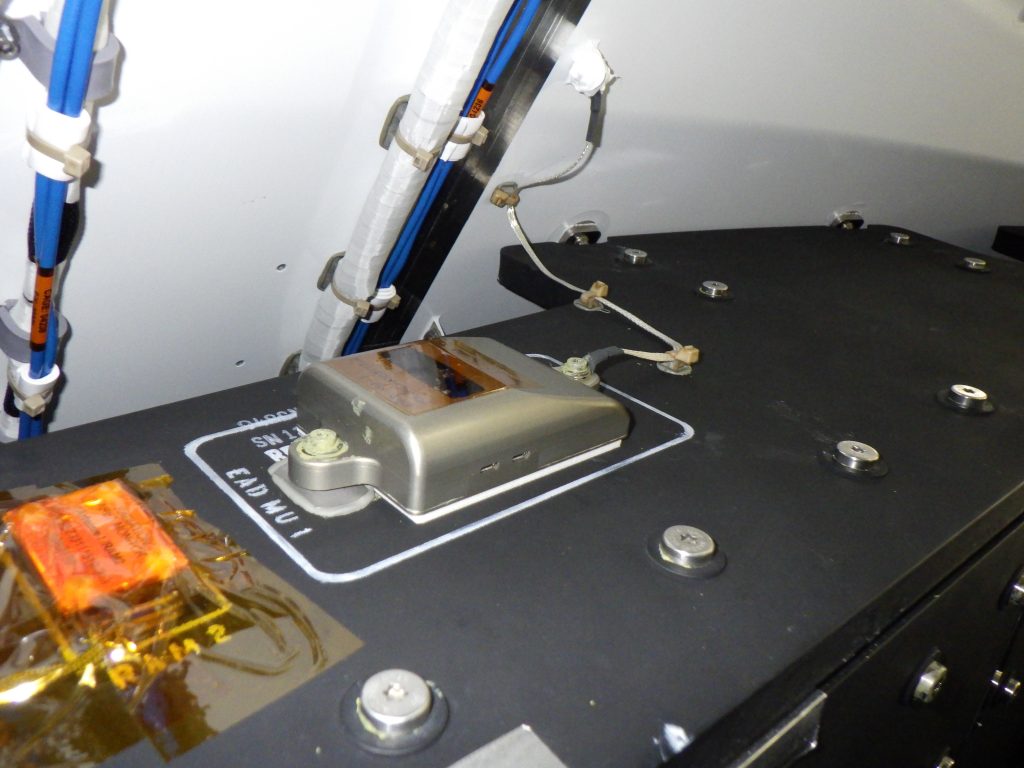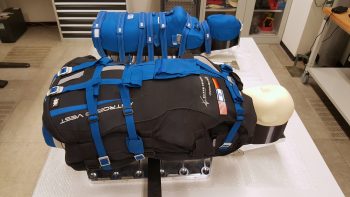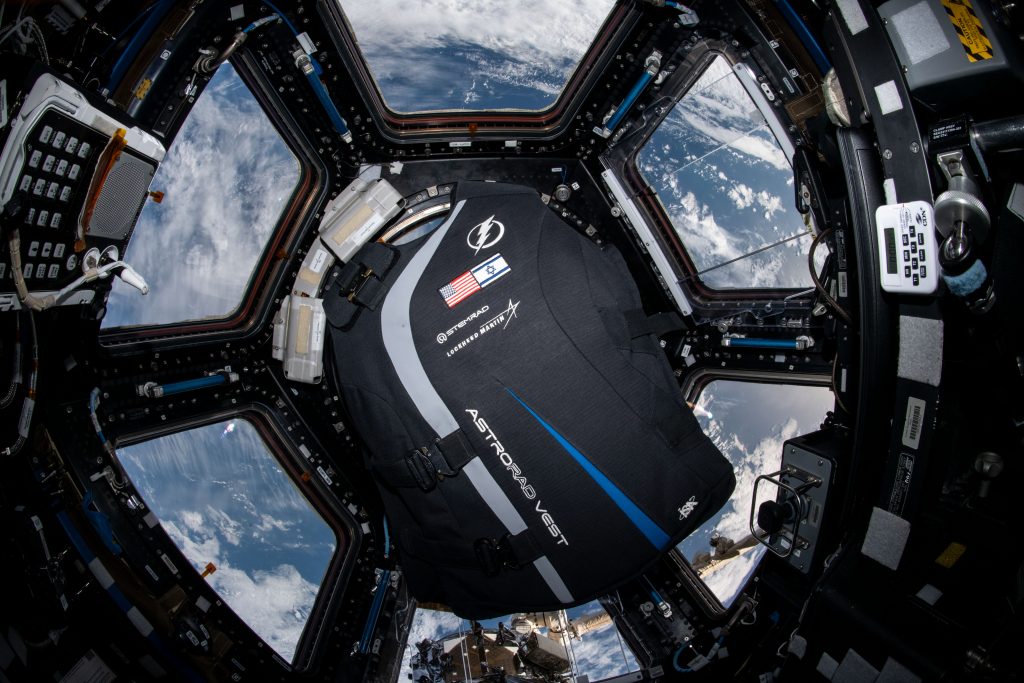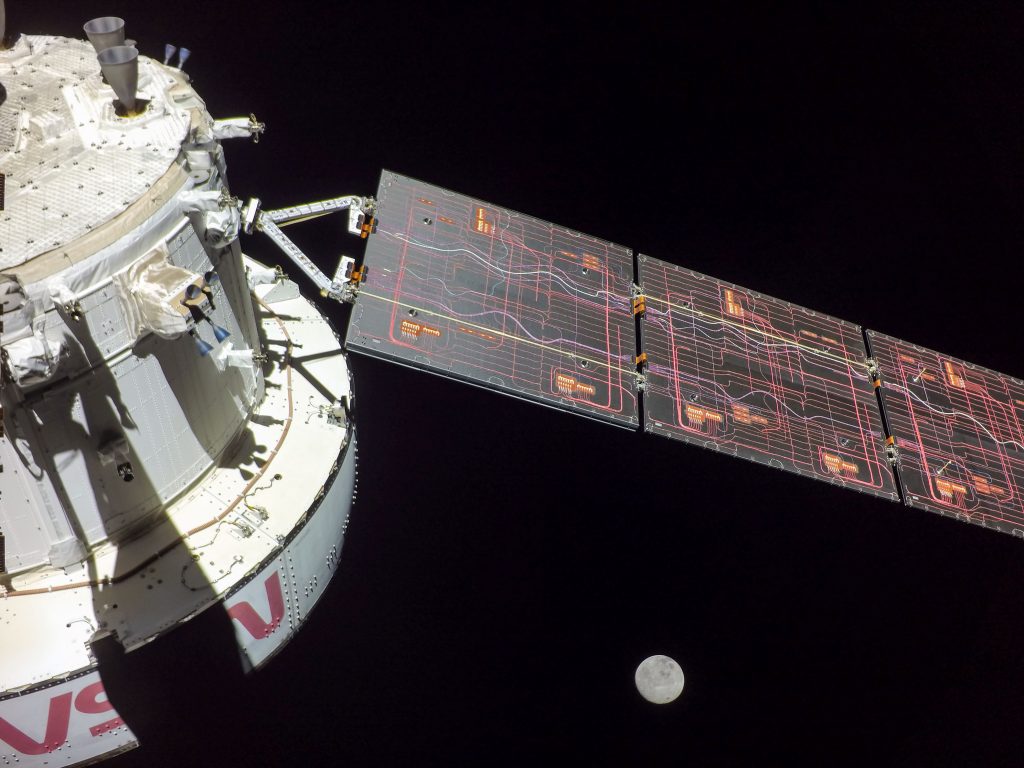After leaving lunar orbit on 1 December, the European Service Module fine-tuned Orion’s heading with the first of three planned trajectory correction burns. The five-second burn occurred at 04:53 CET (03:53 GMT) on 2 December, and changed the spacecraft’s speed by just 0.14 m/s, or 0.5 km/h.
Radiation reading
On flight day 17, 2 December, teams downloaded more images from Orion’s optical navigation camera and data from the Hybrid Electronic Radiation Assessor, or HERA. This radiation detector measures charged particles that pass through its sensors and complements many of the radiation experiments flying aboard Orion, including ESA’s active dosimeters, and the Helga and Zohar mannequins. Measurements from these experiments will help better understand the space radiation astronauts will receive and develop effective protection. In the next Artemis missions HERA will be part of the spacecraft’s safety systems and will sound a warning in the case of a solar energetic particle event, notifying the crew to take shelter. NASA, ESA and other space agencies are testing most of the radiation experiments on the International Space Station too.


Several radiation monitors about the size of a matchbox record the total radiation dose during the mission. ESA dosimeters in the Orion crew cabin collect data and record the time to allow scientists to assess dose rates during various mission phases. The three “purposeful passengers” are collecting information on what crews will experience during future missions. Four space biology investigations, called Biology Experiement-1, are examining the impact of deep space radiation on seeds, fungi, yeast, and algae.

Return to Moon influence
Orion left the Moon’s sphere of influence on flight day eight, ten days ago, and has since been cruising around the Moon. Orion will reenter the lunar sphere of influence, so the Moon will be exerting the primary source of gravitational source again on 3 December. Three days later on 6 December, Orion will leave the Moon’s gravitational clutches for the last time as it heads towards Earth for the 11 December splashdown.

A total of about 3601 kg of propellant has been used, which is about 68 kg less that the amount expected before launch. About 97 gigabytes of data have been sent to the ground by the spacecraft, the equivalent of about three days of continuous movie streaming.
Just after 20:00 CET (19:00 GMT) on 2 December, Orion was traveling 369 846 km from Earth and 81298 km from the Moon, cruising at 4043 km/h.


 Automated Transfer Vehicle page
Automated Transfer Vehicle page ATV blog archive
ATV blog archive
Discussion: 3 comments
I like this Artemis blog. Glad it’s posts are short, understandable, in metric, visually very clear and is not either complex or childish. Thanks. Good job.
Where is the radiation data?
Most experiments will wait for the full data set to arrive before starting analysis, we just provided and update on the MARES suite of experiments here: https://blogs.esa.int/orion/2023/01/20/first-radiation-checks-on-female-phantoms-after-moon-ride/